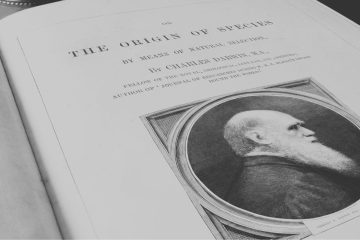What Happened On November 12th?
On November 12, 1966, a satellite captured images of a solar eclipse from space for the first time. This achievement allowed scientists to view the eclipse without the blurring effects of Earth’s atmosphere. The DODGE satellite recorded the moon’s shadow as it crossed the planet, capturing each stage from a position 22,300 miles above. These images revolutionized the study of solar events and offered an entirely new way to observe them.
The Department of Defense had initially launched DODGE to test secure communication technology during the Cold War. Its high-altitude orbit, however, made it an ideal tool for observing the eclipse. Scientists closely analyzed these photographs, using them to study the sun’s corona—the outermost layer of its atmosphere. Viewed from Earth, the corona always appeared distorted due to atmospheric interference. DODGE’s space-based images, however, captured it with a level of detail never possible from ground-based telescopes. These images provided data on solar winds and magnetic fields, revealing new information about how the sun’s energy affects Earth’s upper atmosphere.
Engineer Harold Rosen developed the technology that allowed DODGE to succeed in this mission. Born in New Orleans in 1926, Rosen displayed an early fascination with mechanics and electronics. He attended Caltech and then Stanford, where he distinguished himself as a brilliant engineer with a unique vision. Rather than following conventional paths in electrical engineering, Rosen pursued the idea that satellites could serve as powerful tools for global communication.
In 1956, Rosen joined Hughes Aircraft, where he led a team dedicated to developing space-based communication. Most scientists doubted that satellites could provide stable, worldwide connections, viewing the idea as impractical. Rosen addressed these challenges directly, and in the early 1960s, he developed Syncom, the world’s first geosynchronous communication satellite. Syncom orbited in sync with Earth’s rotation, allowing it to remain stationary over one point and provide continuous communication over large distances.
When Syncom launched in 1963, it enabled President John F. Kennedy to hold a two-way phone call with Nigerian Prime Minister Abubakar Tafawa Balewa, demonstrating that satellites could support real-time global communication. Despite its success, the Syncom project faced multiple technical hurdles, including power fluctuations from solar interference. Rosen resolved these issues by designing a backup power system that kept the satellite operational under difficult conditions. Known for his hands-on approach, Rosen worked closely with his team, diagnosing hardware problems and refining circuits to withstand the demands of space. He selected durable materials and rigorously tested various alloys, ensuring the satellite could handle space’s extreme conditions.
Later, Rosen introduced spin-stabilized satellites, such as the HS 376 model, which used rotation to maintain stability in orbit. This innovation extended satellite lifespans, allowing them to operate for far longer. By the 1970s, the HS 376 model had become widely used in commercial satellites and influenced designs like DODGE. Many of today’s satellites continue to rely on Rosen’s original concepts, providing global communication, broadcasting, and navigation services.
Throughout his career, Rosen continuously adapted his designs to meet the challenges of space. After a powerful solar storm damaged one of his early satellite prototypes, he developed shielding to protect future models from radiation, a feature that soon became an industry standard. He also advocated for inter-satellite link systems, which allowed satellites from different countries to communicate directly, paving the way for networks like GPS. Though he rarely received direct credit for GPS, Rosen’s advances in satellite communication proved essential for its development.
The 1966 eclipse photographs relied on Rosen’s advancements in satellite stabilization. Though DODGE began as a military satellite, it used spin-stabilization techniques that Rosen had refined, which kept the camera steady and allowed it to capture sharp, detailed images of the corona. These photos provided scientists with vital data on solar winds, magnetic fields, and solar behavior, advancing research on space weather and its effects on Earth. The images also revealed satellites’ potential to gather valuable scientific data, encouraging space agencies to design specialized observation satellites.
Even after his retirement, Rosen remained involved, mentoring young engineers, sharing his knowledge, and encouraging creative approaches to problem-solving. In reality, his work provided essential support to fields such as telecommunications, weather forecasting, and global internet systems—advances he foresaw long before they became everyday tools.
From DODGE’s high orbit, scientists observed the eclipse without atmospheric blurring, a view no telescope on Earth could provide. That clear image of the moon’s shadow sweeping across Earth reflected Rosen’s drive to push scientific boundaries. His work brought new possibilities for exploration and connection, launching an era when satellites became essential for communication and discovery.





